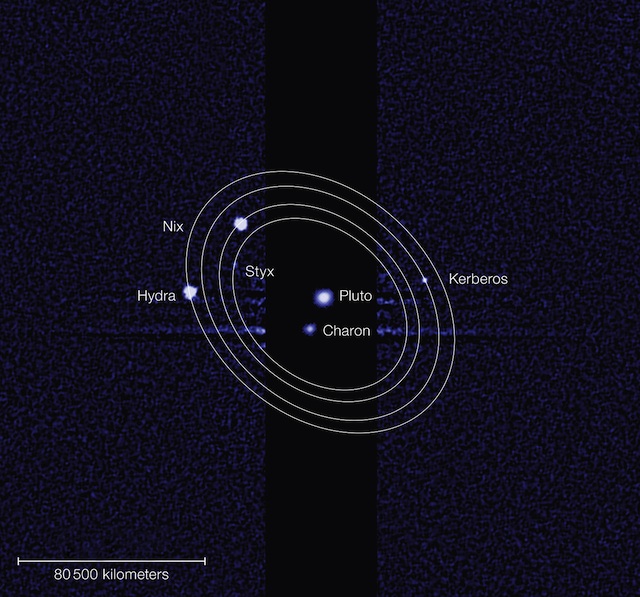SUMMARY
This is AI generated summarization, which may have errors. For context, always refer to the full article.

PARIS, France – Pluto’s fourth and fifth moons, discovered in 2011 and 2012, have been named Kerberos and Styx, the International Astronomical Union (IAU) said on Tuesday, July 2.
Formerly known as P4 and P5, the names were submitted by the astronomers who found them, with input from the general public in an open contest, the Paris-based organization said.
Kerberos is the Greek spelling for the name Cerberus — a many-headed dog that guarded the entrance to the underworld in Greek and Roman mythology.
Styx was the name of the goddess who ruled over an underworld river by the same name.
The moons were discovered by the Hubble Space Telescope.
“Kerberos lies between the orbits of Nix and Hydra, two bigger moons discovered by Hubble in 2005, and Styx lies between Charon, the innermost and biggest moon, and Nix,” said the IAU.
Charon was the first moon to be spotted, in 1978.
“Kerberos has an estimated diameter of 13 to 34 kilometers (eight to 21 miles) and Styx is thought to be irregular in shape and is 10 to 25 km across.”
The IAU acts as the arbiter in naming celestial bodies, advised by astronomers.
“The IAU rules ensure that the names work across different languages and cultures in order to support collaborative worldwide research and avoid confusion,” it said in a statement.
Pluto, once known as the ninth planet from the Sun, was declassified as a full-fledged planet in August 2006 and joined a new category of dwarf planets, although the decision remains widely contested.
At about 2,300 km (1,430 miles) wide, it is two-thirds the size of the Moon and has a mass less than one percent of the Earth’s. – Rappler.com
Add a comment
How does this make you feel?





There are no comments yet. Add your comment to start the conversation.